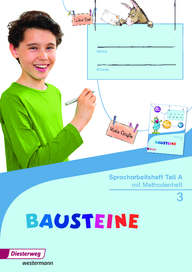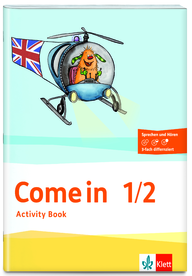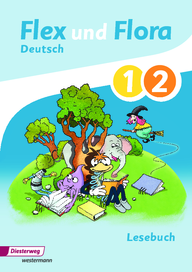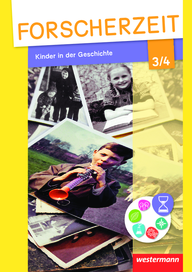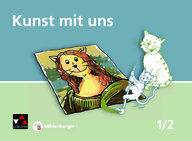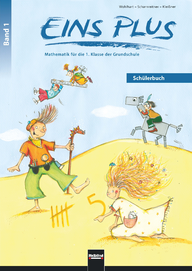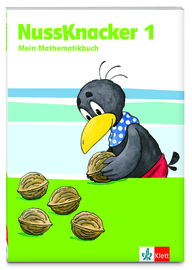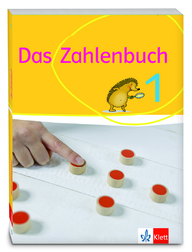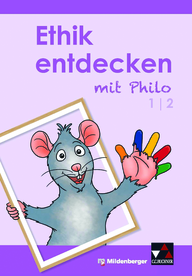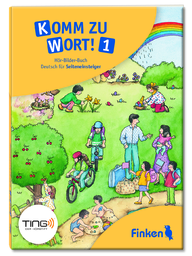-
Category Languages

Bausteine 3
Edited by Gabriele Hinze
Diesterweg 2015
ISBN 978-3-425-16321-5With interesting topics such as Everybody’s moving, Family stories and Driving and flying Bausteine stimulates pupils’ interest in languages. The task-oriented approach skilfully implements new didactic methods; successfully developing working techniques and guiding pupils through the writing process. Teachers can use the clearly structured books to develop and encourage the linguistic competence of their pupils while still incorporating stimulating ideas into their teaching.

Come in 1/2
Authors: Birgit Fretzdorff, Anna Fröhlich, Svea Große-Brauckmann, Nina Heidelberg, Anne Marxen and Viktoria Vutz
Ernst Klett Verlag 2016
ISBN 978-3-12-588451-9Come in provides a holistic introduction to the English language for children starting school: it includes suggestions for drawing and painting, songs to sing along to, ideas for gestures and expressions as well as games to reinforce vocabulary. To encourage all children to speak, the textbook provides exercises on three different levels. The Smartbox is a wonderful addition to the book, containing nuanced material for individual work and fun games to help improve vocabulary retention.

Flex und Flora 1/2
Deutsch [German]
By Kerstin Riesberg, Dominique Rönnecke, Insa Scheller and Gudrun Stenzel
Diesterweg 2016
ISBN 978-3-425-14577-8With names such as Bark, roar or cheep, or Build, make and discover, the chapters in Flex und Flora invoke curiosity and encourage pupils to read and learn more. The differentiation of text and exercises into three levels is admirable and makes the book accessible for all children. It provides a cleverly structured range of material for open lessons in heterogeneous groups and the cliché-free presentation reflects social diversity.
-
Category Society

Forscherzeit
Kinder in der Geschichte [Children throughout history]
Edited by Gabriele Leißing and Karl Heinrich Dirkers
Westermann 2015
ISBN 987-3-14-100295-9The book focuses on the life of children throughout various historical eras; lending this book, from the Forscherzeit series, an immediate appeal to primary school children. The book goes above and beyond the requirements for teaching historic knowledge. Age-appropriate stimuli help pupils to think carefully about history and capture its reconstructive nature. By interviewing contemporary witnesses, explaining findings or drawing comparisons, pupils learn to actively engage with history.

Kunst mit uns 1/2
Textbook for teaching art in primary school
Edited by Claudia Lutz and Verena Willmann
C.C. Buchner/Mildenberger 2015
ISBN 978-3-619-16210-9Kunst mit uns is structured like a museum with many different sections, though which pupils are led by two amusing cats. The book draws an ark between everyday themes and famous works of art. It superbly combines perception and design. Pupils are encouraged to approach works of art with curiosity and candour rather than reverence. The interesting practical exercises make art especially appealing.
-
Category Mathematics

Eins Plus
Mathematik für die 1. Klasse der Grundschule [Maths for year 1]
By David Wohlhart, Michael Scharnreitner and Elisa Kleißner
Helbling 2016
ISBN 978-3-99035-443-8Mathematics as an adventure – a new approach taken by Eins Plus that really stands out. The book features a background story where the five main characters are played by children and which provides excitement and leads to mathematical problems. The book’s lively design provides a successful mixture of open and closed exercises that practise basic skills but also present a challenge for more able pupils.

Nussknacker 1
Mein Mathematikbuch [My Mathematics Book]
Edited by Peter Herbert Maier
Ernst Klett Verlag 2014
ISBN 978-3-12-253510-0The Nussknacker demonstrates a superb combination of arithmetic and geometry. The book also expertly incorporates probabilities, size, shapes and structures enabling a well-rounded introduction to different mathematics skills. One of its strengths lies in the area of problem solving: images of nuts signify challenging exercises which simplifies differentiation for a range of abilities.

Das Zahlenbuch 1
By Melanie Bischoff, Daniela Götze and Birgit Heß, Gerhard N. Müller, Marcus Nührenbörger, Ralph Schwarzkopf and Erich Ch. Wittmann
Ernst Klett Verlag 2017
ISBN 978-3-12-201740-8Das Zahlenbuch provides school starters with an outstandingly well-structured introduction to mathematics. It attaches great importance to the formation of a sound understanding of numbers through clever exercises to deconstruct them. Explorer pages provide tasks for solving problems on a number of levels and throughout the book there are stimuli for communication and debate. Supplementary digital material such as the quick maths trainer app and explanatory films are compelling additions to the concept.
-
Special Prize Diversity in Educational Media

Ethik entdecken mit Philo 1/2
Edited by Eva Marsal
Mildenberger/C.C. Buchner 2014
ISBN 978-3-619-20041-2The ethics book Ethik entdecken mit Philo stands out through its use of a five-finger model to explain five philosophical thought processes in a way children can easily understand. This model effectively opens up a range of child-appropriate approaches to ethical problems. Children learn about topics such as respect, rituals and celebrations based on examples from everyday life with which pupils can identify and which make them aware of social diversity.

Komm zu Wort 1 und 2
Hör-Bilder-Buch [audio and picture book]
Deutsch für Seiteneinsteiger [German for newcomers]
By Doris Fischer and Christina Kellner
Finken 2015/2016Komm zu Wort predominantly revolves around school-related topics, which is generally where children who have immigrated to Germany first come into contact with the German language. This demonstrates the sensibility expressed in this work to the situation of these children, who are addressed actively as ‘newcomers’. The book provides an exemplary didactic framework for the implementation of the basic skills required for language development. The chief attraction is the ‘Ting-pen’ with which pupils can hear words and sentences spoken aloud or can travel on a journey of discovery around detailed scenes.
